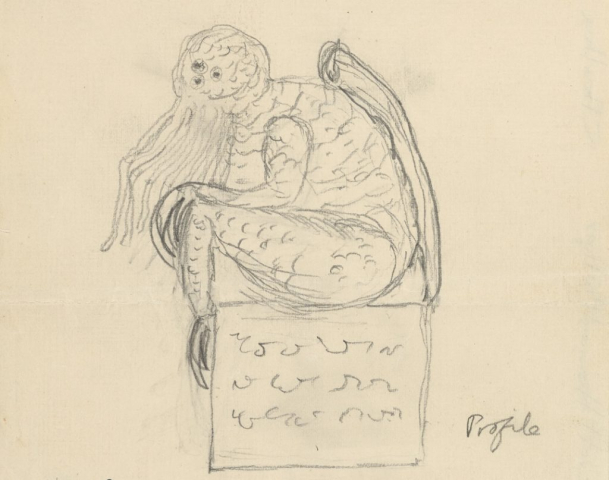
Introduction
In a letter to poet Elizabeth Toldridge, widely influential weird fiction author H. P. Lovecraft muses about the relation between art and imagination:
Art is simply the language of the imagination raised to the highest degree of poignancy, it makes no difference whether the imagination contains what that age & race may consider ‘good,’ or whether it contains what that age & race happens to group as ‘evil.’
At first glance, Lovecraft’s emphasis on “race” might seem conspicuous. However, a closer look at his personal correspondence reveals that (a particular understanding of the concept of) “race” exerted a tremendous influence on Lovecraft by shaping both his politics and literary work to a great extent. This exhibition offers a glimpse of Lovecraft’s “racial imaginaries” and their impact on his fiction. It hopes to reveal that, as author China Miéville says, “there is nothing epiphenomenal about racism in Lovecraft.” Put differently, Lovecraft’s race thinking cannot be separated from his body of work.
In recent decades, the view that Lovecraft was a “racist” has become a well-worn fact. Instead of reaching toward this conclusion, this exhibition holds it as a premise, thereby creating a series of questions: In what ways do Lovecraft’s race thinking surface in his fiction? If, in the words of Miéville again, his race thinking cannot “be divorced from [his] writing at all,” how can we critically “metabolize” it so that we understand and appreciate it differently? Lastly, and perhaps most importantly, what are the implications of the fact that some of the most enduring aspects of Lovecraft’s work — such as his particular style of cosmic horror, his engagement with deep time and his central concern and attendant horror with representing entities that are beyond representation — are “great” not despite his race thinking but because of it?
This exhibition is divided into two main parts. The first focuses on Lovecraft’s personal correspondence and establishes some of the main elements of Lovecraft’s race thinking, namely, his traditionalism and his fear of miscegenation and cultural exchange. The second half of the exhibition focuses on selected literary works and tracks how these elements serve as central themes in his fiction.

